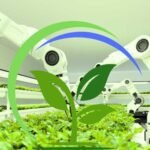Autonomous vehicles, often called self-driving cars, represent a groundbreaking innovation poised to revolutionize transportation systems worldwide. These vehicles leverage progressive technologies such as artificial intelligence, sensors, and connectivity to navigate roads and make driving decisions without human intervention. In this opinion piece, we will explore the possibility of autonomous vehicles and their impact on safety, mobility, and the future of transportation.
Enhancing Safety on the Roads
One of the primary benefits of autonomous vehicles is their potential to enhance road safety. Human error is a leading reason for accidents, and autonomous vehicles can significantly reduce the number of traffic collisions by eliminating human factors such as distracted driving, fatigue, and impairment. With advanced sensors and real-time data processing capabilities, they can detect obstacles, pedestrians, and other vehicles with greater precision and responsiveness, mitigating the risk of accidents and saving lives.
Revolutionizing Mobility and Accessibility
Autonomous vehicles can revolutionize mobility and accessibility by providing transportation options for people who cannot drive due to age, disability, or other factors. Offering on-demand transportation services can enhance mobility for seniors, people with disabilities, and those living in underserved communities with limited access to public transportation. This increased accessibility can improve quality of life, reduce social isolation, and empower individuals to participate more fully in their communities.
Redefining Urban Planning and Infrastructure
The widespread adoption of autonomous vehicles is poised to redefine urban planning and infrastructure development. With the potential for reduced traffic congestion, parking requirements, and vehicle ownership rates, cities can reimagine their transportation networks to prioritize pedestrians, cyclists, and public transit. It may also lead to the repurposing of parking lots and garages for green spaces, affordable housing, and commercial development, thereby transforming the urban landscape and enhancing the livability of cities.
Addressing Environmental Challenges
Autonomous vehicles promise to address environmental challenges associated with traditional gasoline-powered vehicles. Electric energy can be integrated into smart transportation systems powered by renewable energy sources, reducing greenhouse gas emissions and air pollution. Additionally, autonomous vehicle technology enables more efficient route planning, vehicle sharing, and energy management strategies, further optimizing environmental sustainability and reducing transportation’s carbon footprint.
Conclusion
Autonomous vehicles represent a transformative innovation with the potential to enhance safety, mobility, and sustainability in transportation. By leveraging advanced technologies and data-driven algorithms, autonomous vehicles promise safer roads, improved accessibility, and reduced environmental impact. However, the widespread adoption of autonomous vehicles also presents challenges related to regulatory frameworks, cybersecurity, and societal acceptance. As we navigate the road ahead, we must address these challenges collaboratively and responsibly to unlock the full potential of autonomous vehicles and create a safer, more efficient, and more inclusive transportation system for all.












